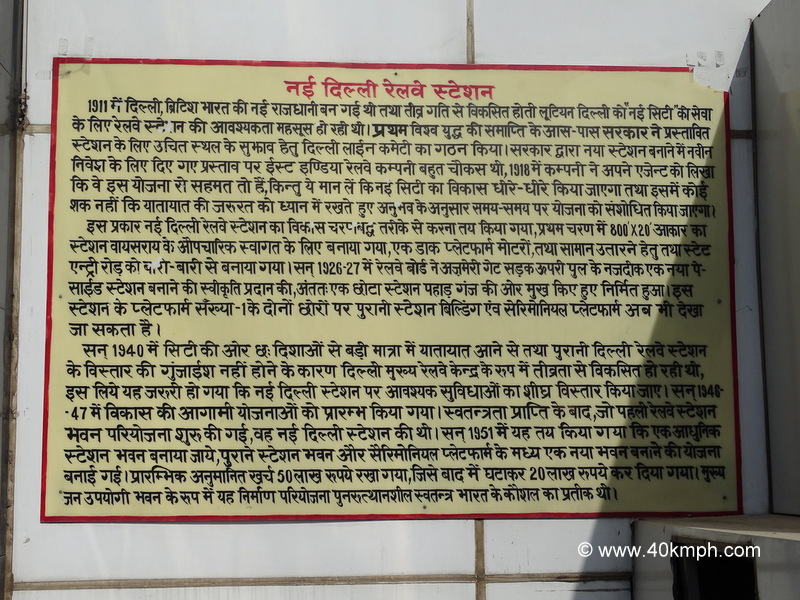Delhi had become the new capital of British India in 1911 and rapidly developing Lutyen’s Delhi needed a railway station to serve the new city. Near the end of World War 1, the government constituted the Delhi Line Committee to suggest a suitable site for the proposed station. The East Indian Railway Company was very wary of the government’s proposal for fresh investment in building a new station, in 1918 the company told its agent that it agreed with the plan, but recognized that the development of the new city would be slow and there shall be no doubt that keeping in view the need of the traffic, according to the experience, the plan should be revised from time to time.
In this way, the development of New Delhi Railway Station was decided to be done in phases, in the first phase an 800’x20′ station was built for the ceremonial reception of the Viceroy. A postal platform was built for unloading motors and goods, and the entry road was built in turn. In 1926-27, the Railway Board approved a new sign station near the Ajmeri Gate Road over-bridge, eventually, a smaller station was built facing Pahar Ganj. The old station building and ceremonial platform can still be seen at both ends of platform number-1 of this station.
In the 1940s, Delhi was rapidly developing as a major railway hub, with a large amount of traffic coming to the city from six directions and no scope for expansion of the Old Delhi Railway Station, so it became imperative that the new necessary facilities should be expanded at New Delhi Railway Station soon. In the year 1946- -47, the upcoming schemes of development were started. After independence, the first railway station building project was started was that of the New Delhi Railway Station. In 1951 it was decided that a modern station building should be built, and a new building was planned to be built between the old station building and the ceremonial platform. The initially estimated expenditure was kept at Rs 50 lakh, which was later reduced to Rs 20 lakh. This construction project in the form of a public utility building was a symbol of the prowess of a resurgent independent India.
